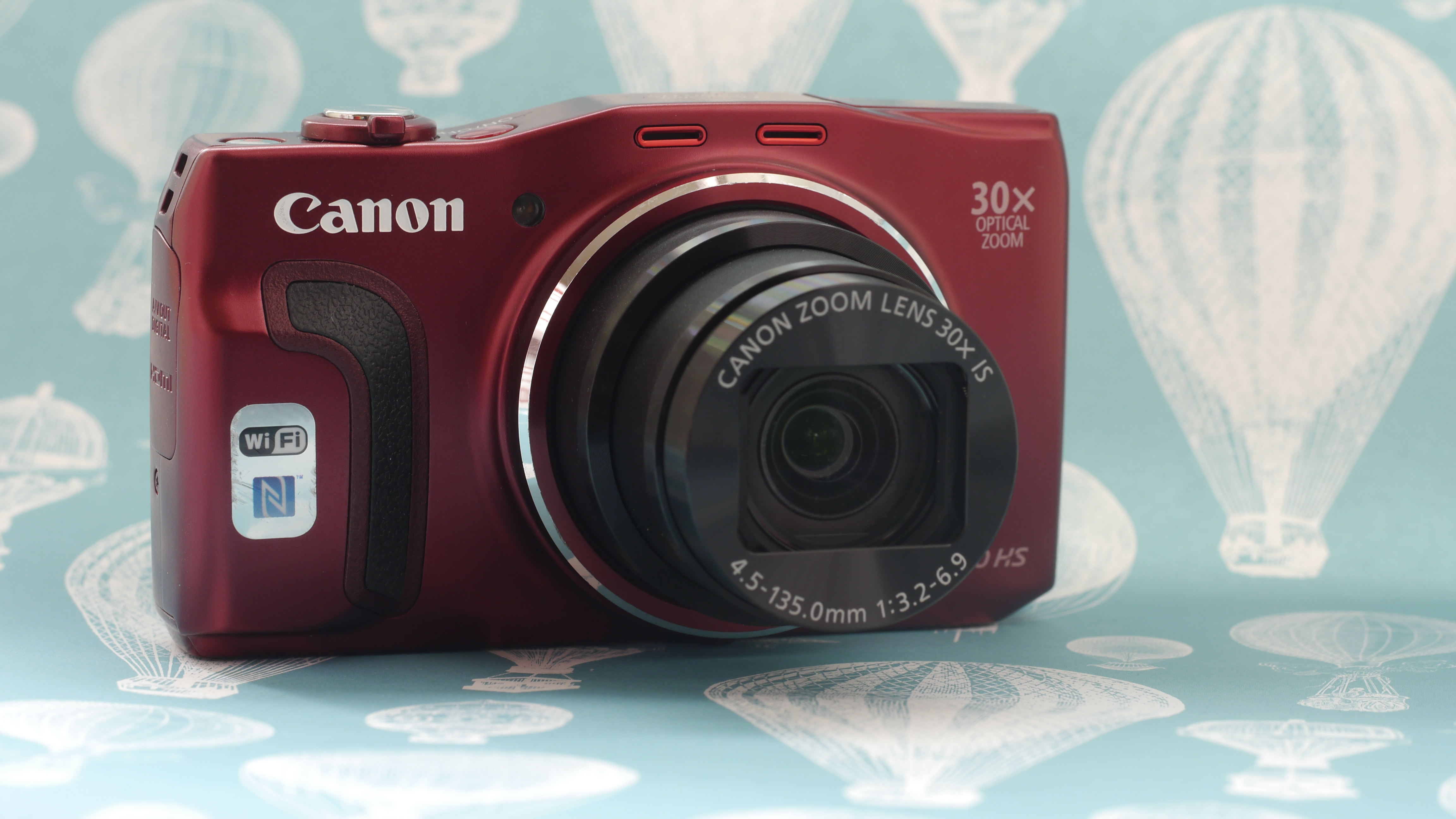Why you can trust TechRadar
Considering the SX700HS packs away a 30x optical zoom, the camera is remarkably slim. It's easy enough to fit the camera in the average jeans pocket, making it particularly appealing for those on holiday. On the front of the camera is a pronounced grip which makes it feel secure in the hand, particularly when shooting one-handed.
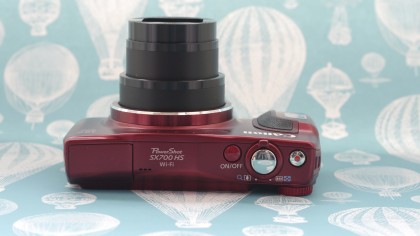
All of the buttons, of which there is a decent range, can be found grouped towards the right hand side of the camera, making them easily reachable with the thumb. The only exception to this is the switch which enables the flash to pop up and the Framing Assist button, which are found on the left, on the side of the camera.
At the top of the back of the camera is a mode dial which allows you to quickly choose the exposure mode you want to use. On here there's lot to choose from, including Automatic, video, Creative, scene and all of the manual and semi-automatic modes. The dial goes all the way around, so if you're at one end of it, you can simply twist it back around to the start, rather than having to go all the way back on itself – which makes it fairly quick to use. Anybody who's used to the mode dial on a DSLR will probably enjoy this.
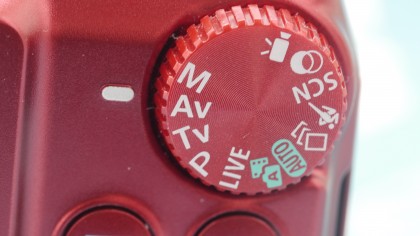
On the back you'll also find a classic four-way navigational pad, with a scrolling dial around it. The scrolling dial can be used to change settings such as aperture or shutter speed, depending on what mode you're shooting in. Each of the four navigational keys has a specific function assigned to it, such as left for macro focusing, downwards for timer mode and up for exposure compensation.
There's a dedicated button which you can press to connect your phone (or tablet) to the camera. Once you've set up the initial connection between your device and the camera, all you'll need to do in future is press the button to start an instant connection. From the app you can select photos to copy across to your device, or remote control the camera.
Sadly, you can't change any settings on the camera when remote controlling, which is something we'd like to see for the next version of the app. All you can do is zoom the lens in and out and fire off the shutter release – still it's handy for group portraits which you want to include yourself in, or if you're trying to shoot from a particularly awkward angle. The camera is also equipped with NFC, so if you have a compatible device, then all you'll need is a simple tap together of the two to start a connection.
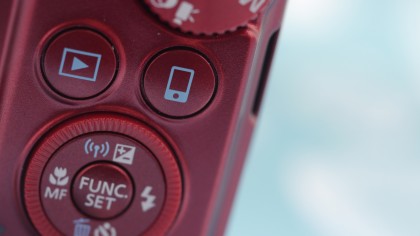
When in playback mode, that dedicated button allows you to quickly send across an image from your phone to your smartphone or tablet which you can then share online. Unlike with compacts such as the PowerShot S120, you can't share directly to sites such as Facebook from the camera itself.
Pressing the function button in the middle of the four-way navigation pad gives you access to a sort of quick menu, which contains all the most commonly used settings. The menu will change depending on what shooting mode you're in, but for instance if you're in aperture priority, you'll find you'll be able to change settings such as sensitivity (ISO) and white balance from here. It's also here that you'll be able to access film simulation modes, and when in the Creative Mode, from here you can change the filter which is being applied.
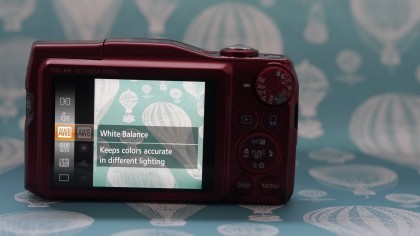
If you need to change something a little more in-depth, or not so commonly accessed, the main menu is accessed via its own dedicated button on the back of the camera. This menu is sensibly arranged into different tabs, and if you've used a Canon camera before, you'll certainly be at home here. You'll probably find that you don't need to use the main menu all that often though.
Unfortunately, there's no way to set the autofocus point to a point of your choosing – which seems a little odd for a camera of this calibre and price point. Instead, you can have face tracking, or set the point to the centre of the frame and focus and recompose.
The button on the left side of the camera, the Framing Assist button, is a very useful button for a camera with a 30x optical zoom. It basically allows you to very quickly zoom back out of a scene and back in again. When zoomed in, holding down the button will quickly zoom back out, keeping a square around the area which the lens will zoom into again once the button is released.
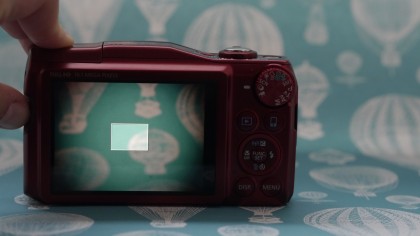
On top of the camera, there's the on/off button, the video record button, the shutter release and a zoom switch. Zooming in and out of the 30x zoom range is fluid and smooth. There's a short pause before entering the digital zoom territory, which helps you to avoid that if you don't want to use it, or just to make you aware that you are using it.
Shooting in Creative Shot is a little frustrating. While on the one hand, the idea of randomly applied filters is fun, it would be nice to be able to choose one that you particularly liked, especially as those that are available in the separate creative mode are not quite as varied, and are a little outdated by comparison to some of the different filters available elsewhere.
Amy has been writing about cameras, photography and associated tech since 2009. Amy was once part of the photography testing team for Future Publishing working across TechRadar, Digital Camera, PhotoPlus, N Photo and Photography Week. For her photography, she has won awards and has been exhibited. She often partakes in unusual projects - including one intense year where she used a different camera every single day. Amy is currently the Features Editor at Amateur Photographer magazine, and in her increasingly little spare time works across a number of high-profile publications including Wired, Stuff, Digital Camera World, Expert Reviews, and just a little off-tangent, PetsRadar.
